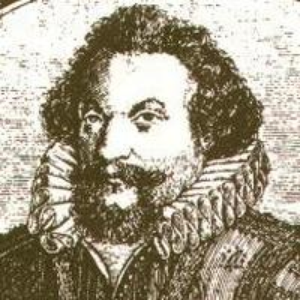Mateo Flecha el vejo
(1481-1553)

Poetry and Music under the Catholic Sovereigns
- ANONIMO, Villancico, Riu riu chiu” (Cancionero de Uppsala)
- MATEO FLECHA el vejo (1481-1553), Ensalada “La Justa”
- ANTONIO DE CABEZON (1510-1566), Diferencias sobre “Guardame las vacas”
- ANONIMO, Villancico, “Rey aquien Reyes adoran” (Cancionero de Uppsala)
- MATEO FLECHA el vejo, Ensalada “El Jubilate”
- ANTONIO DE CABEZON, Diferencias sobre la Pavana italiana
- MATEO FLECHA el vejo(1481-1553), Ensalada “El fuego”
- ANTONIO DE CABEZON, Diferencias sobre la Gallarda milanesa
- MATEO FLECHA, Ensalada “La Bomba”
The period running from Ferdinand the Catholic coronation (1479) to the death of Philip II (1598), is one of great splendour for Spanish music. Under the Catholic sovereigns not only are Aragon, Castile, and Navarre united into one State, but Spain’s “siglo de oro” (golden age) begins. During this period all the arts (music, in particular) flourish and develop, thanks to the sovereigns’ patronage. The Cancionero de Palacio (Madrid, National Library) is one of the most precious sources of 15th and 16th century Spanish music. The first pieces of this programme belong to this collection, which includes the best vocal and instrumental production by composers under Ferdinand of Aragon and Isabella of Castile. Among other musical forms of the time, one of the most popolar was the “villancico”, a folk type of song, later to become a cultured composition, while keeping the original amorous and ironical themes. Compared with the poliphonic compositions of the Flemish, which the villancico derived from, this form is simpler, more melodic, with the highest voice and its motif standing out, as Mediterranean singing (and Andalusian and Catalan singing) prefer.
Mateo Flecha “the elder’ is a rather singular figure in Spanish music of the time. A child cantor in Barcelona cathedral, then in that of Lleida, he became chapelmaster there, in 1523. From 1544 to 1548 he was chapelmaster of the Infantas of Castile and for their private religious services he probably composed his famous “ensaladas”. The very name tells that these poliphonic compositions, all with religious texts, are a mixtureof verses in various languages (Latin, Catalan, Portuguese) with frequent onomatopaeas and words bent to get a naïf and amusing theatrical effect. There we see the struggle between Good (personified at times by Adam, the Virgin and Jesus) and Evil (Lucifer).
